Daisy was Born and raised in Greater London since 1990, Daisy is an artist with an education in design and driven by craft. She graduated from Central St. Martins with a fashion design degree, and she has exhibited with and is part of the 62 Group. Her work has also been exhibited at MAC Birmingham and the National Centre for Craft and Design in Sleaford, UK.
In this article, we learn how Burt, Daisy’s latest creation, came to life. It’s not only a fascinating behind-the-scenes view of Daisy’s techniques, but it’s also a peek into her whimsical thought process and candid joy in what she creates.
Name of piece: Burt
Year of piece: 2018
Techniques and materials used: Dyeing, Hand stitch, pattern cutting, applique – jersey, dye, wadding, stuffing, sand, plastic beans, bean bag beans
Size of piece: Life Size, Human body size
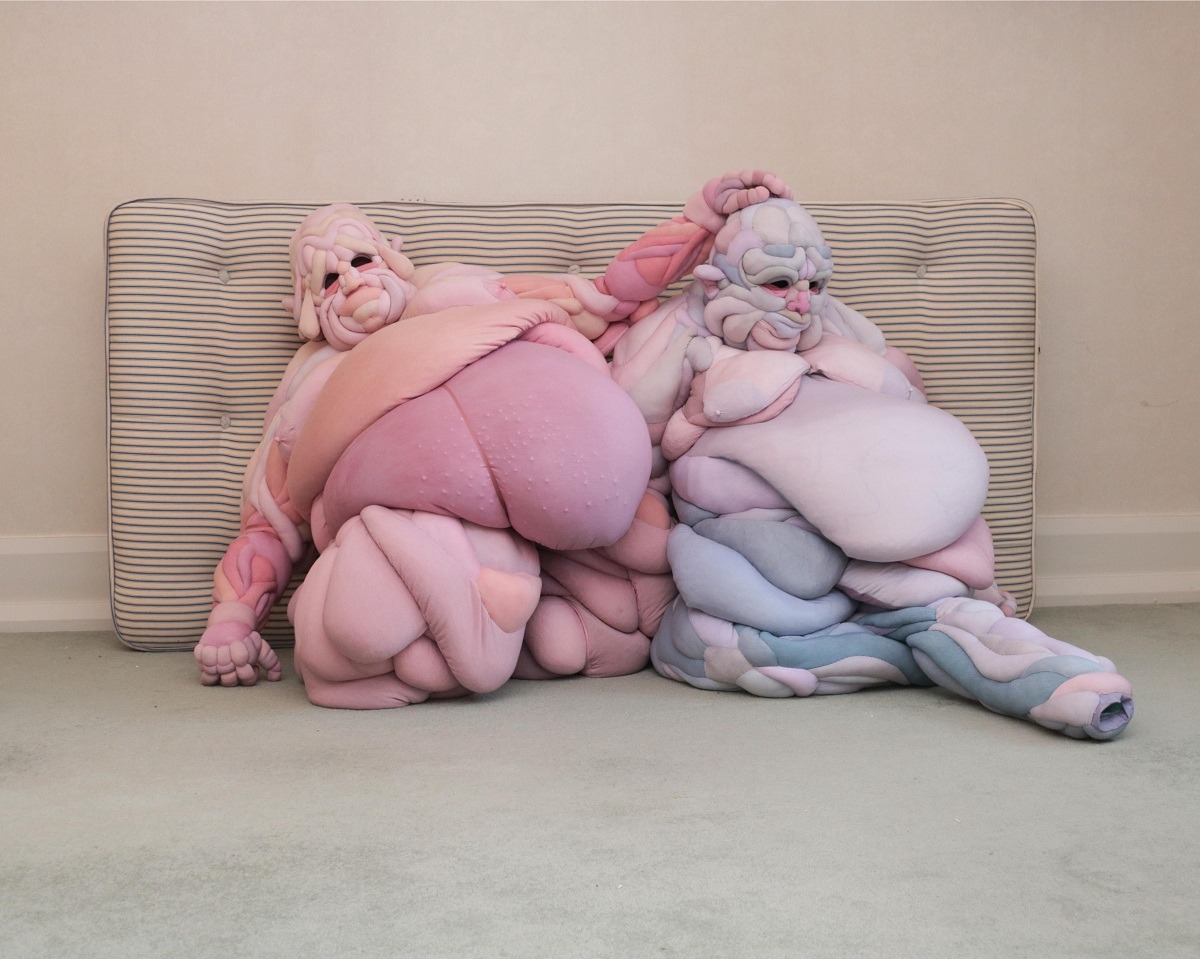
The ‘Squishy’ family grows
TextileArtist.org: How did the idea for the piece come about? What was your inspiration?
Daisy Collingridge: His name is Burt. Names usually come to me after I’ve made a head. It’s kind of like naming a baby. You mull over ideas while pregnant, but you ultimately wait to meet the new human before you know what feels right. Still, I’m not sure why he’s a Burt. So much of what I do feels impulsive and random. I am not a deep thinker!
Burt is number three in the ‘Squishys’ family, and he’s my favourite because he feels a lot more refined in technique. Much more pattern cutting was involved, so he feels better constructed. The quality of craftsmanship is always important to me. It determines whether or not I like a piece, and it ultimately drives me to improve my method for the next one.
For Burt, I wanted to focus on movement and presence, so I introduced a lot more weight. While fabric weight matters, by introducing approximately 5 kg of weighted beans inside the jersey fabric, I achieved a lovely pendulous effect. The combination of stretchy jersey fabric and weight led to a much more dynamic movement. But the downside is that makes him hard to wear!
My fashion design background drilled into me the importance of considering fastenings and the practicality of getting into a garment. All the Squishy’s feature zips, buttons, backwards jackets, gloves, dungarees, and more.
But Burt is just two pieces: trousers (with braces) and a top, complemented by two gloves and the mask. Simple!
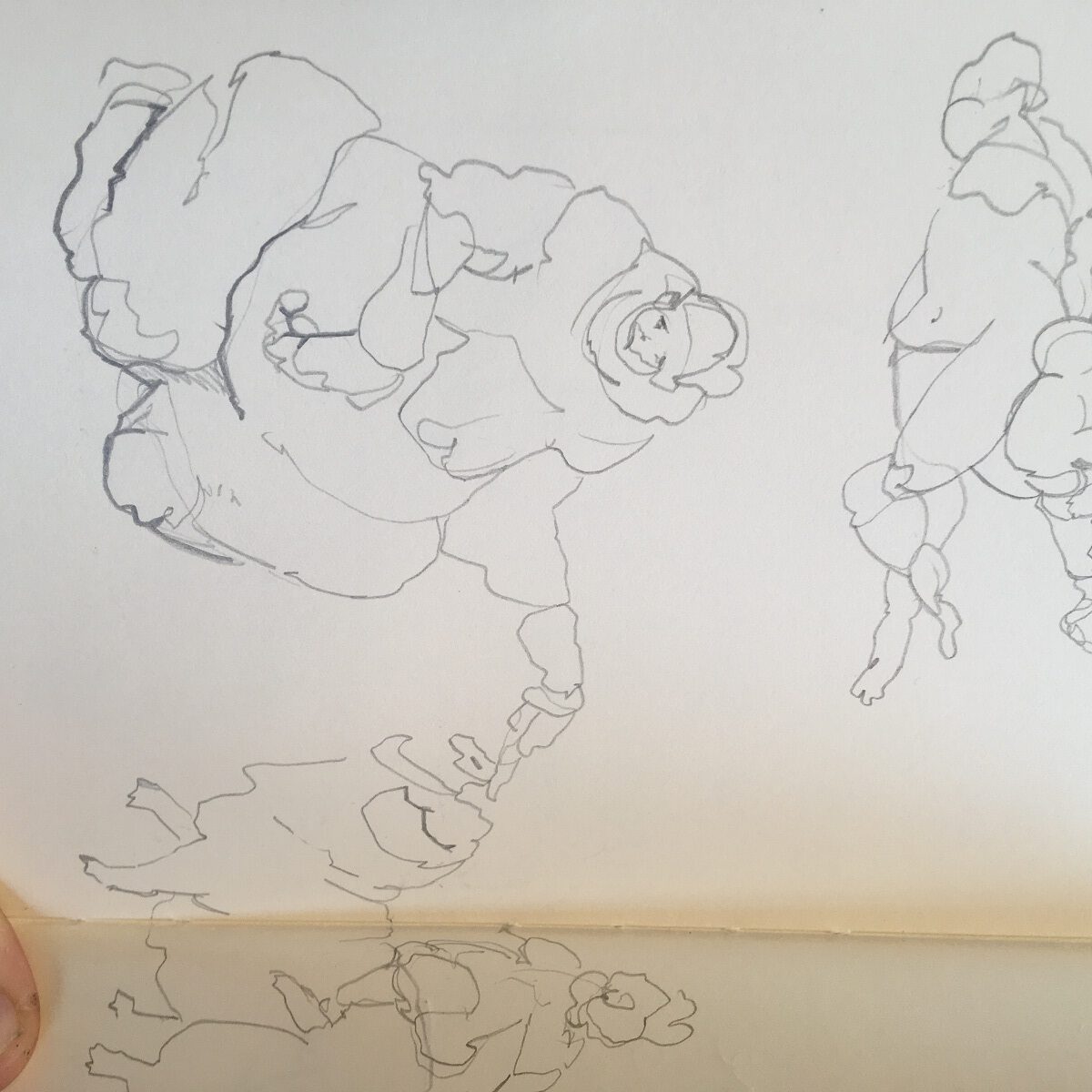
What research did you do before you started to make?
I believe in the ’10,000-Hour Rule’ noted in Malcolm Gladwell’s book ‘Outliers’. The idea is you must dedicate 10,000 hours of perfect practice to excel in something. It’s a logical idea. People overuse the word ‘talented.’ I believe it is all about how much perfect practise you have had.
I dread to think where I’m at with those 10,000 hours. It has certainly felt like 10,000 hours bent over a sewing machine quilting five monster dresses!
I don’t use sketchbooks. I spend considerable time thinking, as well as spouting nonsense to anyone that will listen. The characters definitely develop as I make them. I think I might be due to an experimentation period in which I allow myself to try something new.
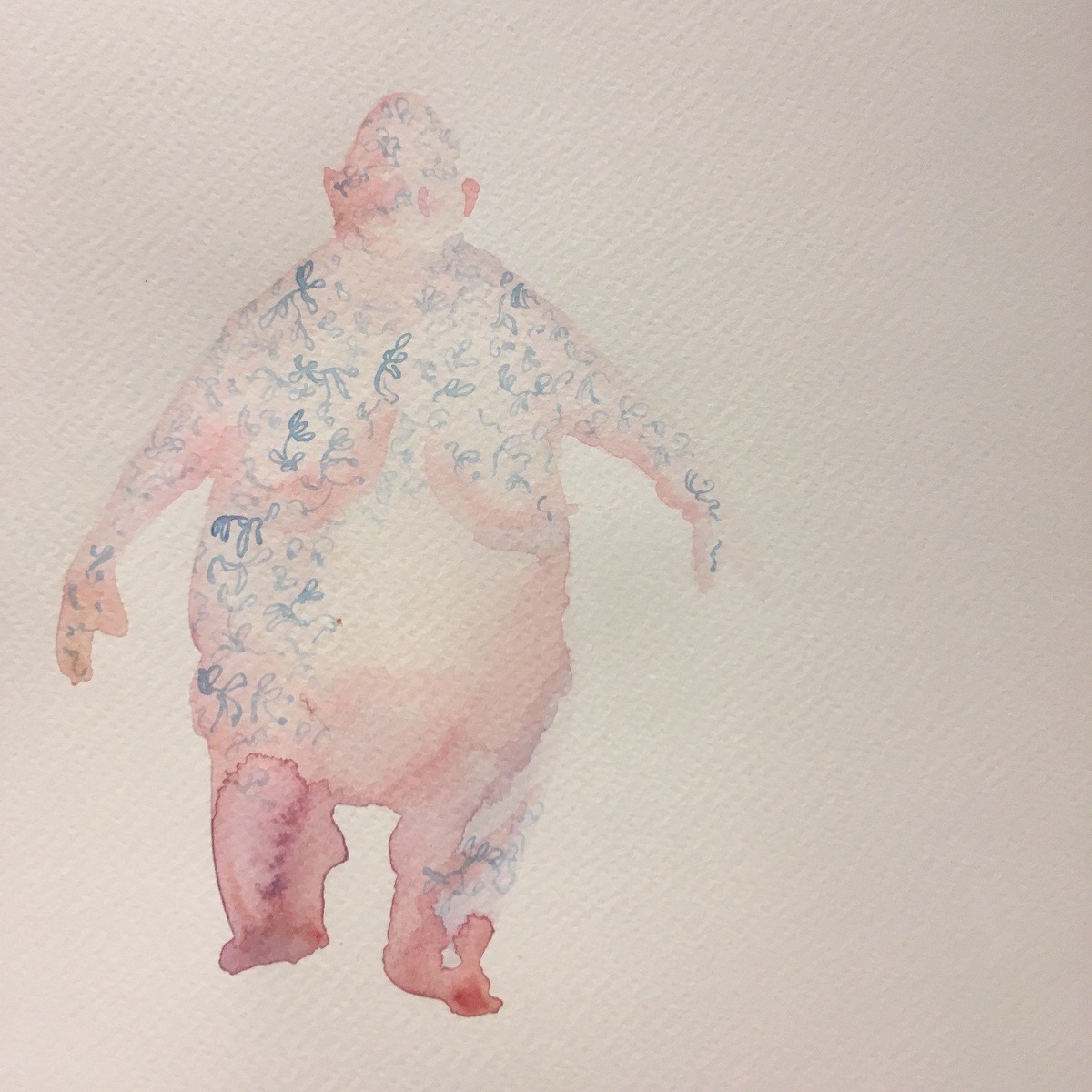
The joy of weighted blobs
Was there any other preparatory work?
I make blobs, or perhaps a more professional term would be ‘machetes.’ I use paper and sticky tape to experiment achieving some satisfying 3-dimensional shapes. The more organic and the least number of pattern pieces the better. It takes two to three pieces to create one blob.
If there is a promising-looking shape, I then sew it in fabric and see how it hangs when stuffed and weighted. It’s a horrendous trial-and-error procedure. Thankfully, the more I do it, the more I learn about what shapes work. However, I do wish I was more organised when it comes to keeping hold of the patterns that work.
I give myself two weeks before a project to play and experiment. I don’t do this work full time, so that 2-week window is a way of allowing myself to experiment without feeling too much pressure. You don’t realise how lucky you are at college when you are given a whole six weeks to create one piece. Ridiculous!
Again, I was investigating the use of weighted bags/blobs with Burt. While the other characters have some degree of weighted pellets, Burt is the first in which I pushed their use to the extreme. There is a balance to adhere to. I love to see the characters move. There is something joyful about seeing them come to life. But if I make them too heavy, they’ll be less free to move and the risk of spilling beans is much higher!
I’d like to explore machine embroidery in my next figure, but I haven’t worked out that solution yet.
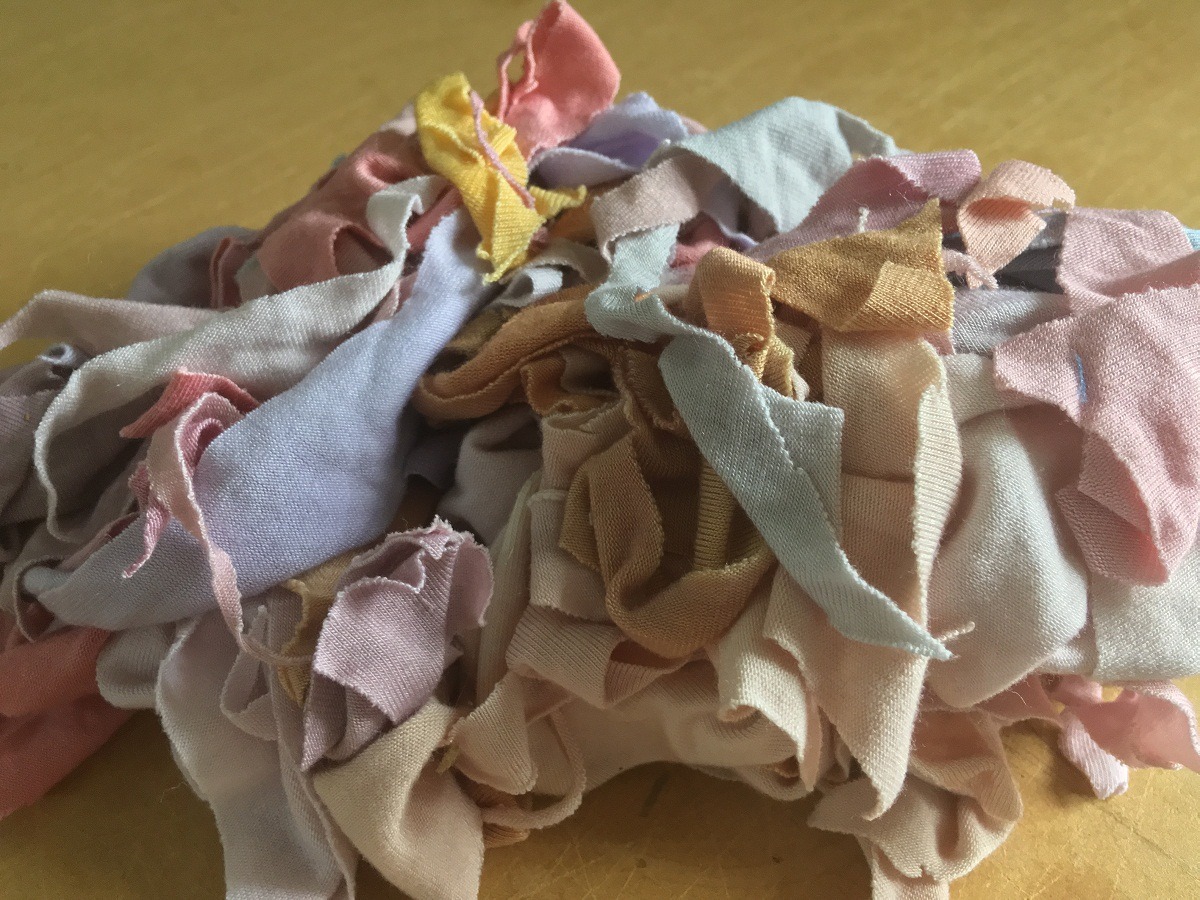
What materials were used in the creation of the piece? How did you select them? Where did you source them?
Jersey is still proving to be my favoured fabric. It is super stretchy, not too thick and takes up the dye well. I am on the hunt for a new fabric to play with, but jersey is the best so far.
I always go to Shepherds Bush for fabric. It’s where I went as a student. Lots of choices!
I used weighted beans when making teddy bears as a kid. But interestingly, the beans I now buy on eBay are sold for weighted blankets for people with autism, anxiety and stress. The blankets are based on the benefits of ‘Deep Pressure Therapy’ in which we respond to gentle pressure that is evenly distributed across the body…like a hug. You learn something every day!
The beans are plastic pellets. I have used sand before, but it ends up slowly sifting through the fabric, which isn’t a good look. I have made some small figures for animation, and for those, I used the sand option. Big plastic pellets look a bit lumpy in something so small.
Spilling the beans is definitely a concern. If the fabric is pulled too hard, the beans will spill. So, I try to machine sew sections in which beans are contained whenever possible. And when I do hand stitch, I try to use very sturdy and practical stitching. I also sometimes put the beans in a nylon bag made from tights if I can’t machine sew.
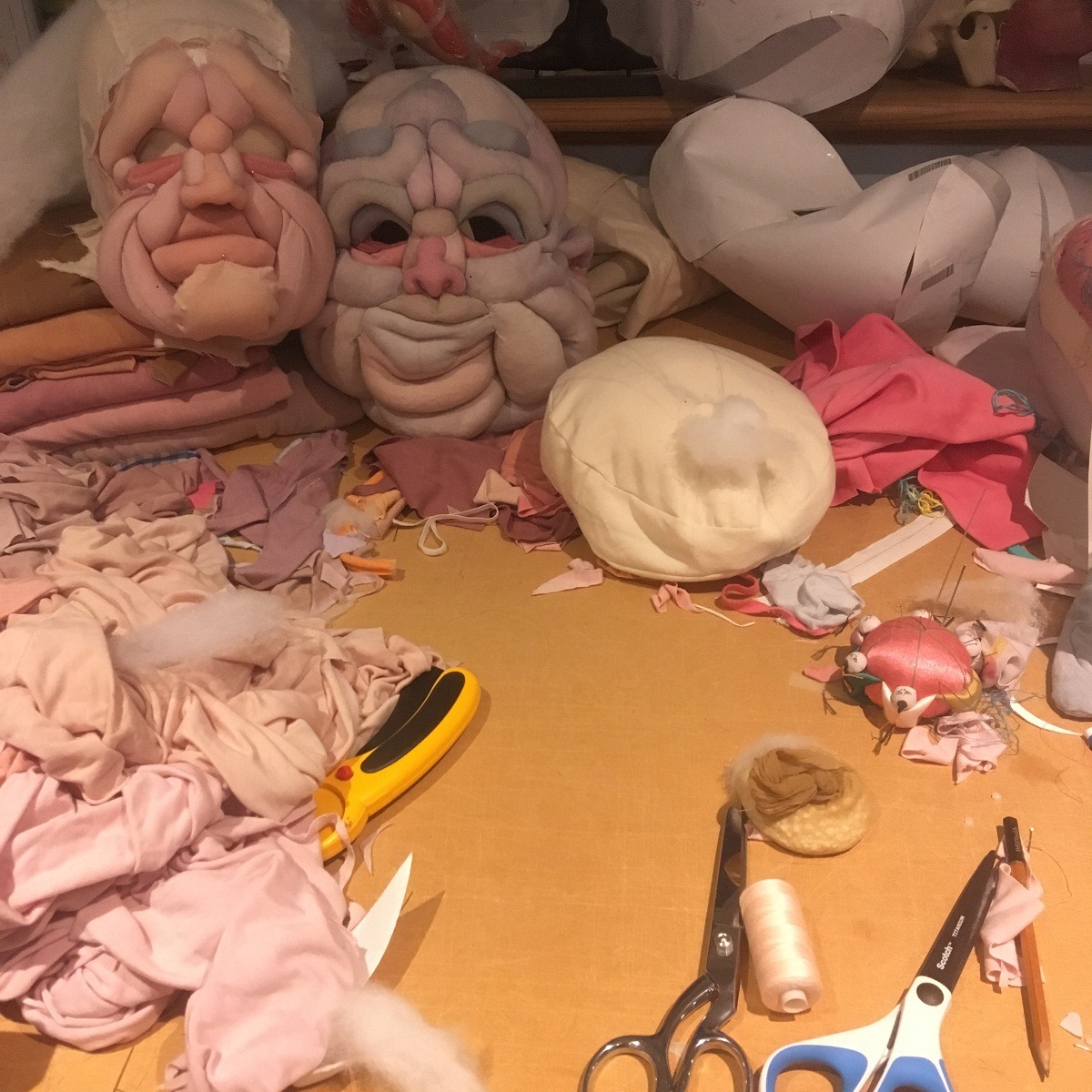
What equipment did you use in the creation of the piece and how was it used?
I’m pretty basic. I have a Janome Memory Craft 6600P sewing machine that I received on my 18th birthday because I was a mega-cool teen.
The majority of my work is done with a needle and thread. It’s highly labour intensive. The humble stitch is super strong if you do enough of them! The weighted blobs are machine stitched together and then handstitched to the ‘garment’ section as it’s impossible to machine sew. I use a lot of aggressive backstitching.
I’m now realizing with amusement I’m still a garment designer. Many of the techniques I use are from garment construction and ‘couture’ (hand-sewn). I also often use at least 10 meters of layered fabric in just one pattern piece, which is similar to couture. And I sew most of my garments on a mannequin, which is also a direct connection to couture.
I use Procion dyes for all my dyeing. Years ago, my wonderful mother purchased a whole heap of trade-sized tubs in a closing sale somewhere, and we are still working our way through them! I have finally moved out of my family home (ish), but I still return to dye in the kitchen sink.
Colour is important, and pastels are my favourite. Pastels are easier to dye, and any blotches are less noticeable on lighter fabrics. Plus I think the relief and definition has more contrast on lighter fabrics. I like to change colour palettes subtly. And perhaps someday, I’d like to do a yellow sandy one.
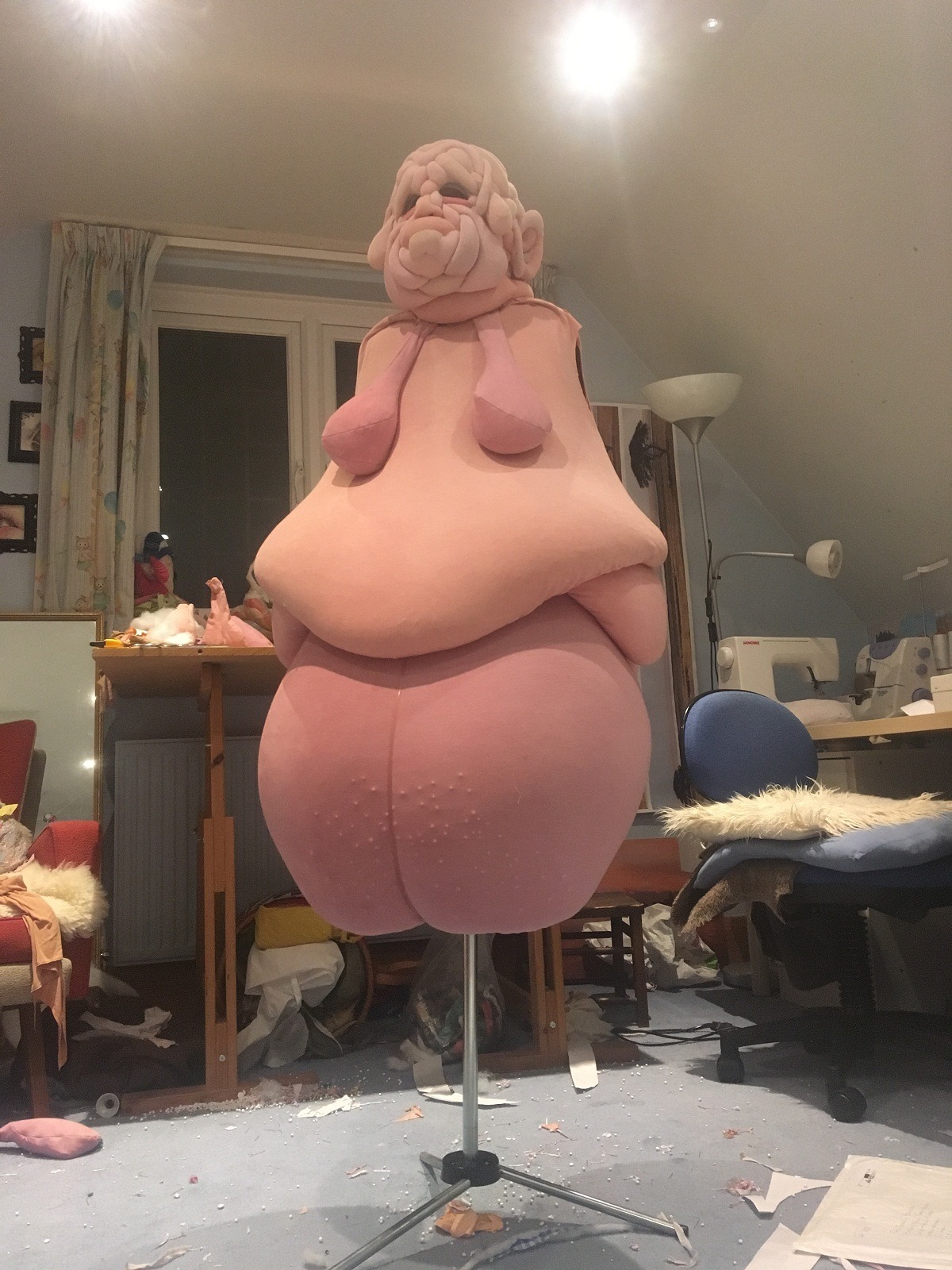
Balancing droopy bits
Take us through the creation of the piece stage by stage
I might possibly doodle in a sketchbook to work out a rough body shape.
I’m also a big talker, and I’ll witter away to people in the hope saying something out loud will solve any problems and spark new ideas.
Then I dye the fabric and start constructing the garments.
For Burt, I used standard pattern cutting techniques. Then the underlying volume, as well as the belly, legs and other key areas, are padded out with wadding.
I just use the fattest polyester wadding (used for toy making) I can get my hands on. I’ve also got a big bag of amazingly soft stuff from Freecycle. BONUS! This helps to make the jersey sit smoothly on top of the wadding. The contrast between the stiff wadding and the weight of the beans are the elements with which I like to experiment.
Next begins the process of painstakingly hand-sewing coloured blobs of fabric onto the wadding and stuffing. This process involves draping and is often done on a mannequin.
With Burt, there are also weighted droopy bits which are pattern cut, machine sewn, filled with beans and finally sewn on by hand.
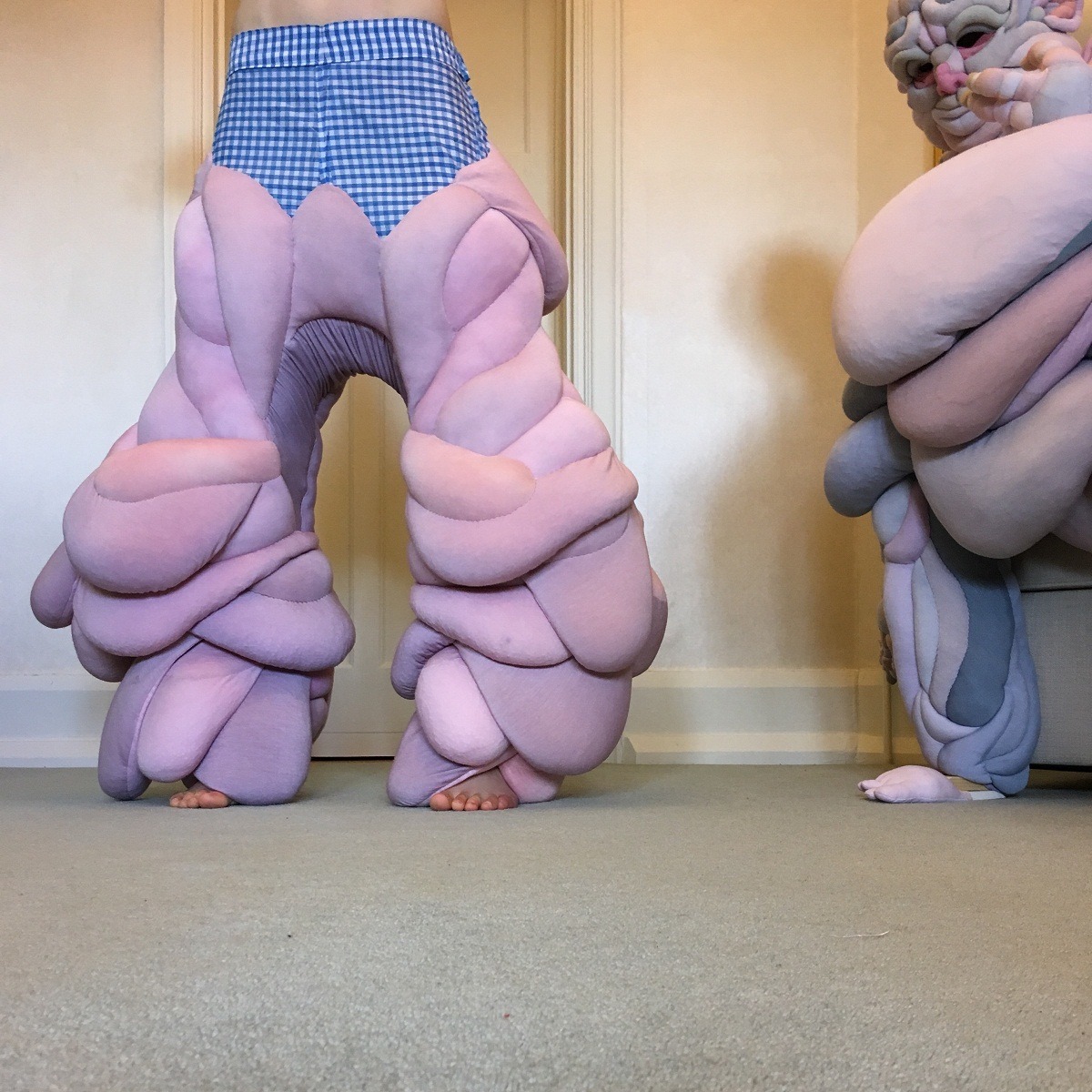
What journey has the piece been on since its creation?
Burt’s debut appearance will be at the October 2019 Knitting and Stitching show at Alexandra Palace in London. I am in the process of planning the exhibition. I am hoping for some kind of performance. I am currently making one for my dad, Dave. So, Dave might be wandering around the show.
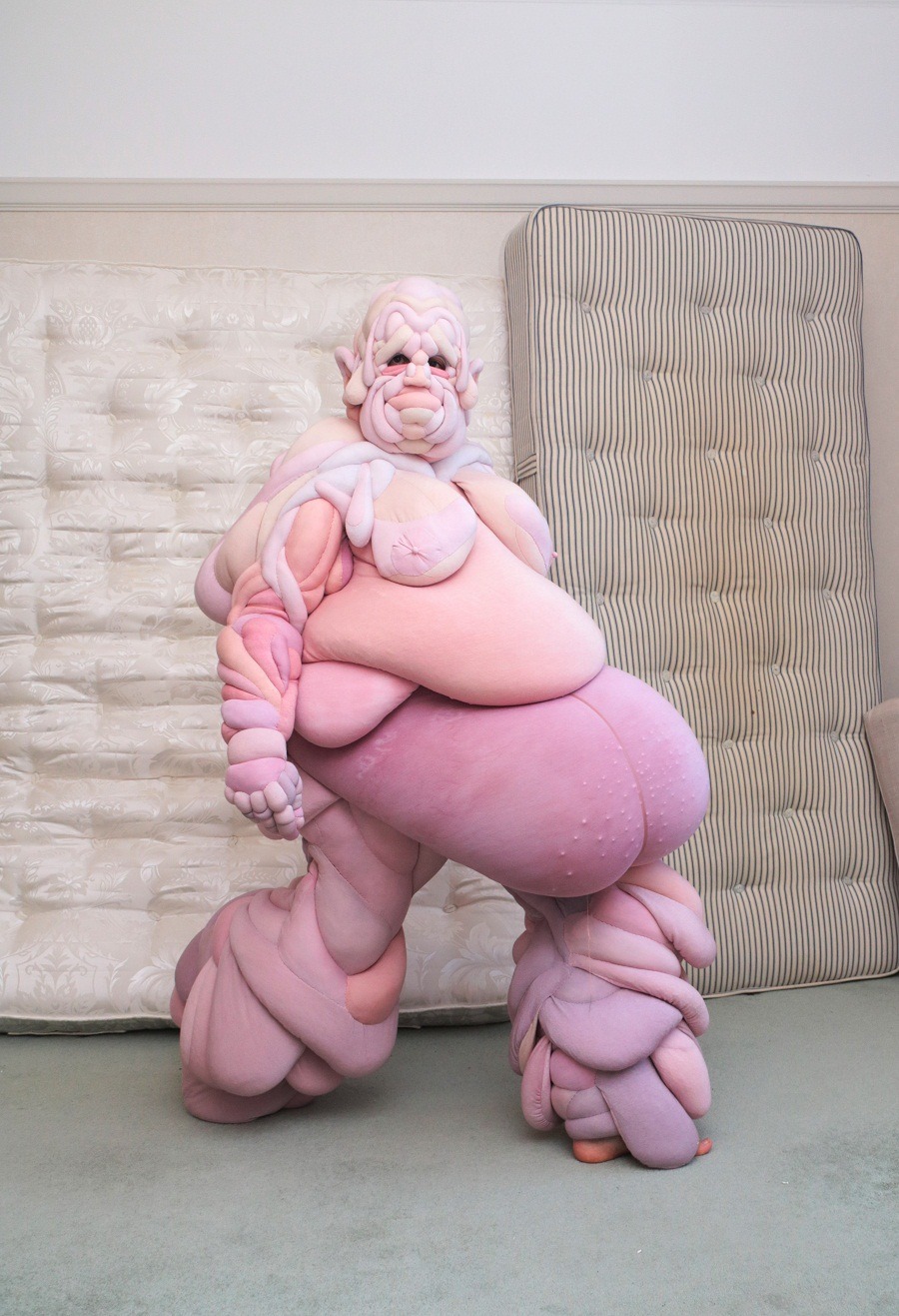
For more information visit www.daisycollingridge.com and follow Daisy on Instagram
How much fun are Daisy’s ‘Squishys?’ We’d love to hear what you think below.
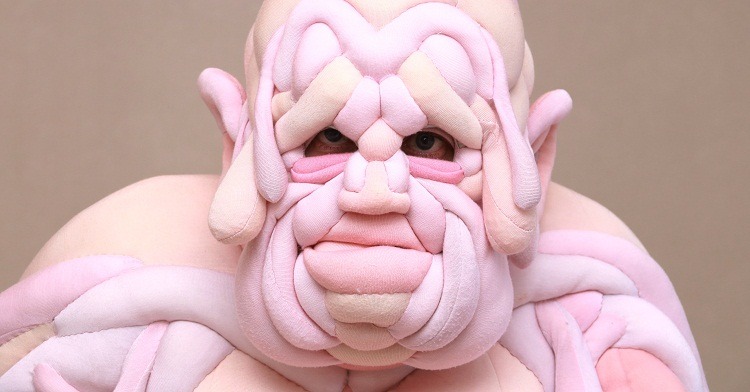

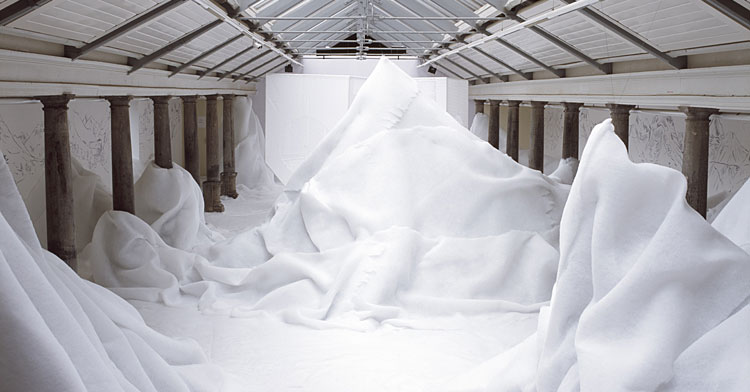

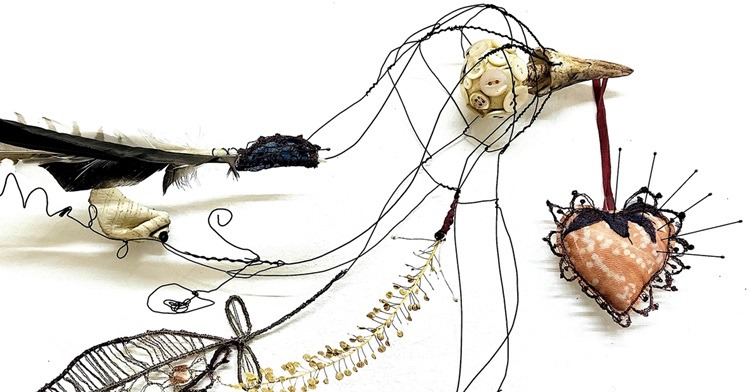
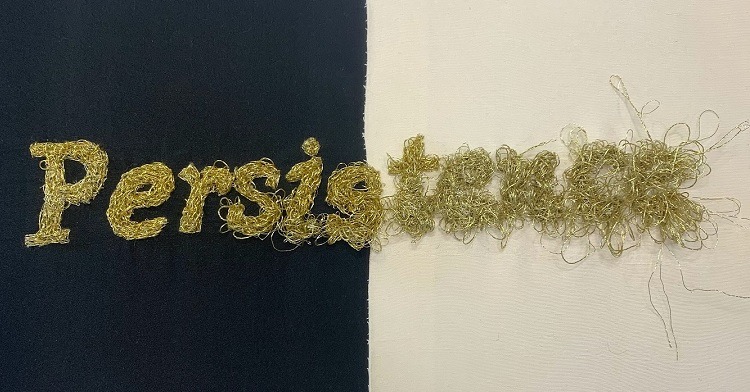
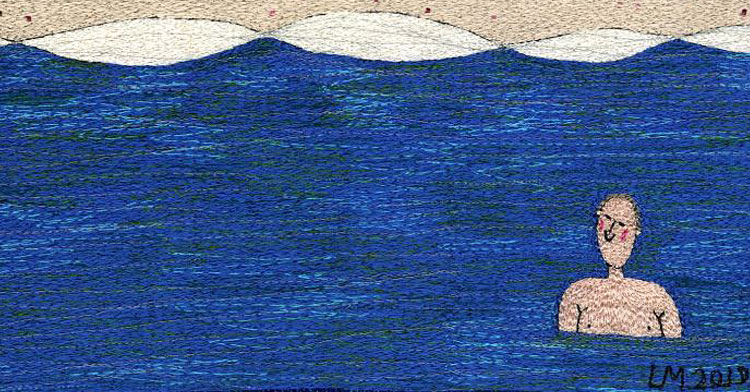
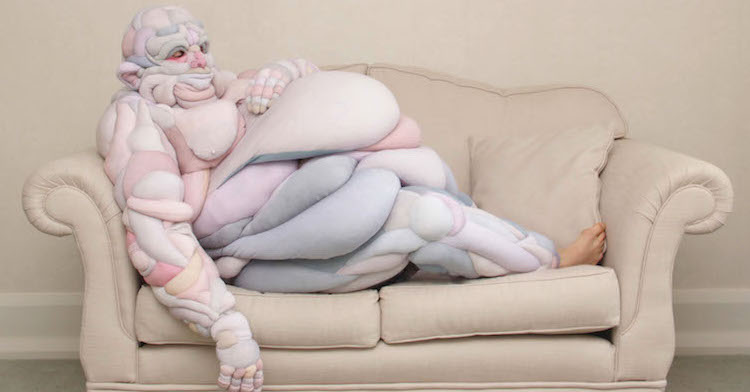
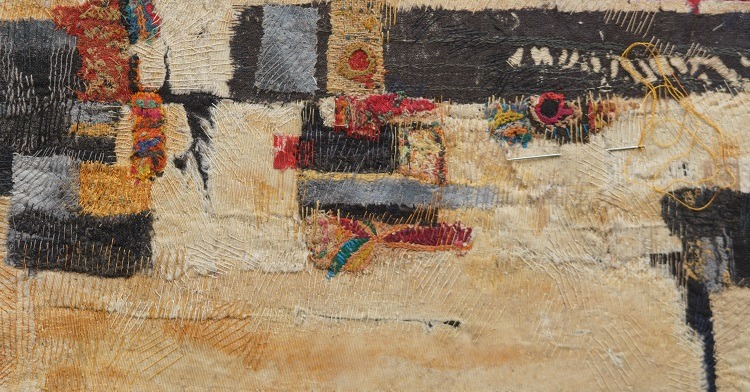
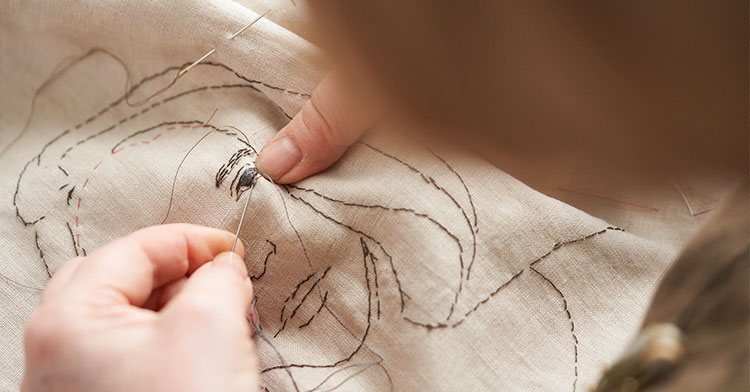
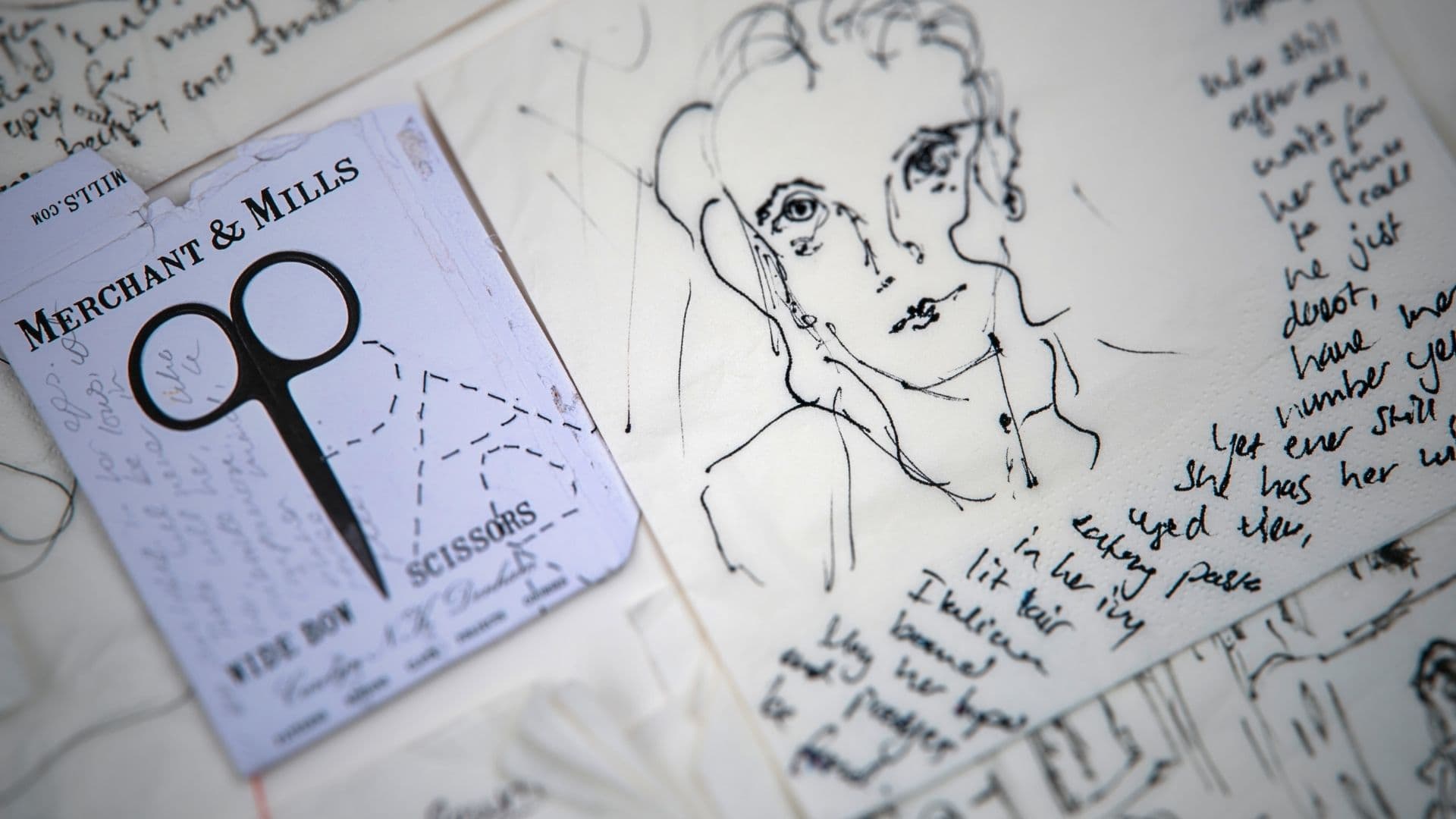
10 comments
Janet
I have the same concerns as Lisa H. It seems to be about looking at the obese and poking fun. If it’s not then Daisy needs to be clear. I’m surprised no-one else has raised this. I feel quite uncomfortable everytime I see Daisys work and the offence it could cause.
Gloria Whiting
Daisy’s work is amazing! Having seen many of the members of the “Squishy” family mid creation, I am so excited to go to see them at the Knit & Stitch Show at Alexander Palace tomorrow. Go Daisy !!
shirley
so fun and so much work–i like them–we could be friends
Lisa H
Interesting! While nothing in the interview suggests animosity, these costumes seem to be shaming or making fun of obesity. I’m curious about Holly’s purpose. She mentions “movement” and “presence” when asked about her inspiration, but otherwise the article is all about technique and materials, except where author calls it a celebration of loose and flabby body parts in the introduction.
Is it a celebration? Perhaps. Every human body is a miraculous, unique organism. But with these characters leaning towards the grotesque, I see more criticism than love for the obese body.
Lisa H
Goodness, I goofed up on Daisy’s name (here, and in other correspondence about the article.) My apologies!
-Lisa H
Threadpainter
What fun !
Gregory T Wilkins
LOVE your concept! The visual it presents is alluring. Keep up the GREAT work.
Lorna
This style of costume was featured at World of Wearable Art in New Zealand in 2016. Hope there isn’t a copyright issue.
Craftgin
It is the same artist.
Heidi
this is the same artist